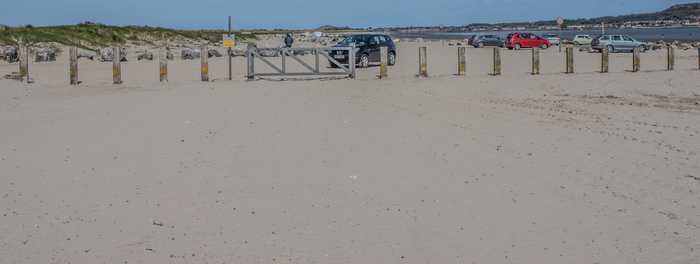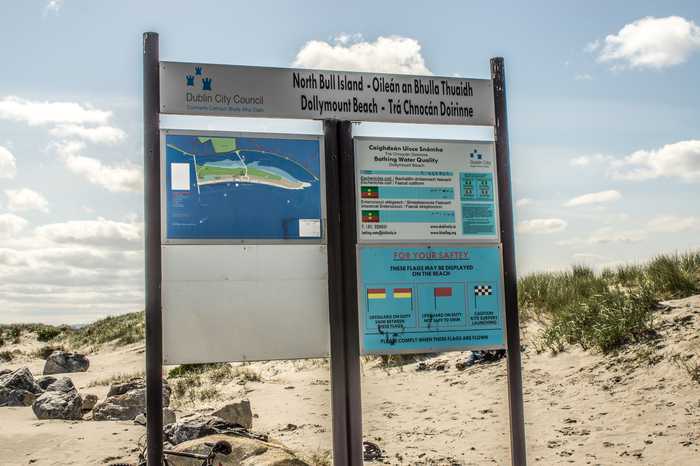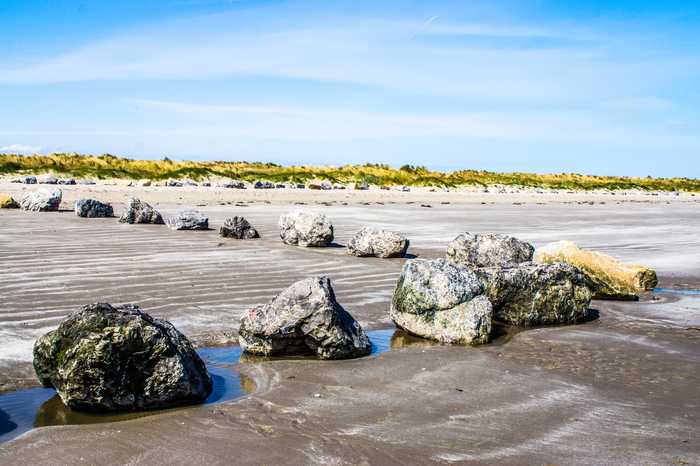
Dollymount Strand
- Water temp(satellite):
- 9.9°C
- 2025-12-21
Dollymount Strand is in the county of Dublin. During the bathing season, a life guard is on duty. There are restrooms and a parking space nearby. No dogs allowed on the beach. People with disabilities can access the beach. Beach wheelchair is available. Beach wheelchairs can be booked by emailing pat.corrigan@dublincity.ie.
Dollymount Strand, located on North Bull Island in Dublin Bay, is the closest large beach to Dublin City Centre. This sandy beach stretches from the north Bull wall to the island's northern tip and offers various activities like walking, kite flying, rowing, and canoeing. The island's sand dune system is one of Ireland's finest and features rare and threatened coastal habitats, making it internationally significant for conservation. The area is protected by the Flora Protection Order and Red Data Book.
Walking, kite-flying and water sports are among the regular activities at the site. Daily numbers of walkers were estimated to be 150 while numbers participating in canoeing and rowing were 30-40 per day. Several football teams train at North Bull Island. There are several yachting or water-sports clubs located around the site including the Sea Scouts that are located on the site. Dog walkers frequently use paths in the dunes and around the beach. Wind-powered activities such as kite-surfing have increased in popularity in recent times. The site is also used by the Irish Whale and Dolphin Group (re-floating beached whales) and also for water safety training. The high nature conservation value of the site also attracts nature-lovers including bird-watchers. Several nature conservation groups such as Birdwatch Ireland, Irish Wildlife Trust and Dublin Naturalist's Field Club regularly run field-trips to the island. Bait digging is a common activity, especially at the northern and southern ends of the site, in Sutton Creek and near the Wooden Bridge. More recently, individuals and small groups have collected shellfish including Mussels( Mytilus edulis) from the North Bull Wall. Dollymount Strand is used for angling as is the North Bull Wall. The island is frequently used for educational and research purposes and there is an interpretative Centre located near the causeway. This centre attracts school groups and other groups for talks on the island. The Interpretative Centre is a ‘Discover Primary Science’ field centre. Thirdlevel colleges frequently have field-trips to the site and there have been many undergraduate and post-graduate studies on various aspects of the island.
Dollymount Beach is situated on the North Bull island which is a low-lying dune covered sand spit, nearly 4.85km long and 0.70km wide at its widest point. It runs parallel to the coast between Clontarf and Sutton in the northern half of Dublin Bay. To the south, North Bull island is bounded by the Bull wall and to the north it is separated from Howth head by Sutton Creek. A series of dun ridges make up the back bone of the island. On the seaward side, these are delimited by Dollymount strand and by a salt marsh and lagoon on the leeward side.
North Bull Island is a coastal sand spit located in Dublin Bay. It is one of the finest sand dune systems in Ireland and is internationally important in terms of its conservation value. There are high quality examples of several rare and threatened coastal habitats present on the island. It has a wealth of biodiversity, which includes several habitats and species listed in Annexes I and II and the EU Habitats Directive, the use of the site by national and internationally important numbers of wintering waders and wildfowl and the presence of several rare plants listed on the Flora Protection Order (S. I. No. 94 of 1999) and in the Red Data Book (Curtis & McGough 1988).


